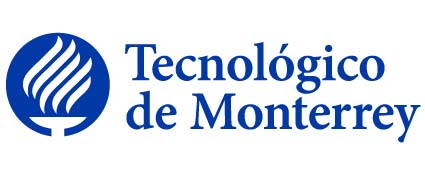
|
Curso en el que se recomienda incorporar el uso de tecnologías de información. |
|||||
|
|||||
Disciplina asociada:Tecnologías Electrónicas |
|||||
Escuela:
Ingeniería y Ciencias
|
|||||
Departamento Académico:
Mecatrónica
|
|||||
Programas académicos: |
|||||
Requisitos:(Haber Cursado TE1002 o Haber Cursado TE1018) |
|||||
Equivalencia:TE2000 ; TE2001 |
|||||
Intención del curso en el contexto general del plan de estudios: |
|||||
|
Curso de nivel intermedio en el área de electrónica, que estudia el comportamiento de un circuito eléctrico compuesto por resistencias, capacitancias, inductores y fuentes de alimentación de tipo senoidal. Asimismo, se analiza el impacto que tiene un circuito eléctrico en el ahorro de energía, por medio del análisis de la potencia eléctrica. Requiere de conocimientos previos de análisis de circuitos eléctricos alimentados por corriente directa. Como resultado de aprendizaje, el alumno podrá analizar un circuito eléctrico alimentado por fuentes de corriente y voltaje senoidal, así como el efecto de la potencia en el consumo energético del circuito. El alumno también analizará el efecto que tiene la variación de la frecuencia en el comportamiento de un circuito eléctrico. |
|||||
Objetivo general de la Unidad de Formación: |
|||||
| Al finalizar este curso, el alumno será capaz de analizar circuitos eléctricos alimentados por una fuente de tipo senoidal. | |||||
Técnica didáctica sugerida: |
|||||
| Aprendizaje colaborativo | |||||
Bibliografía sugerida: |
|||||
|
LIBROS DE TEXTO: * Hayt, William Hart, Engineering circuit analysis , 7th ed., New York, N.Y. : McGraw-Hill/Higher Education, 2016, Ingles , 0071106693 (international ed.), 007286611X (encuadernado : papel alcalino), 0073263184, 9780071106696 (international ed.), 9780071109376, 9780072866117 (encuadernado : papel alcalino), 9780073263182 |
|||||
Perfil del Profesor: |
|||||
|
(141001)Maestría en Ingeniería Eléctrica/Electrónica y Comunicaciones ; (111002)Maestría en Administración de las Telecomunicaciones ; (110701)Maestría en Ciencias Computacionales ; (110101)Maestría en Ciencias Computacionales/de Información ; (140901)Maestría en Ingeniería Computacional ; (110102)Maestría en Inteligencia Artificial /Robótica ; (110901)Maestría en Redes de Sistemas Computacionales y Telecomunicaciones ; (141001)Doctorado en Ingeniería Eléctrica/Electrónica y Comunicaciones ; (111002)Doctorado en Administración de las Telecomunicaciones ; (110701)Doctorado en Ciencias Computacionales ; (110101)Doctorado en Ciencias Computacionales/de Información ; (140901)Doctorado en Ingeniería Computacional ; (110102)Doctorado en Inteligencia Artificial /Robótica ; (110901)Doctorado en Redes de Sistemas Computacionales y Telecomunicaciones CIP: 141001, 111002, 110701, 110101, 140901, 110102, 110901 |
|||||
|
Course in which it’s recommended to incorporate the use of information technologies. |
|||||
|
|||||
Discipline:Electronic Technologies |
|||||
School:
Engineering and Sciences
|
|||||
Academic Department:
Mechatronics
|
|||||
Programs: |
|||||
Prerequisites:(TE1002 or TE1018 ) |
|||||
Equivalences:TE2000 ; TE2001 |
|||||
Course intention within the general study plan context: |
|||||
|
The purpose of this intermediate-level electronics course is for students to study the behavior of an electric circuit composed of resistors, capacitors, inductors and sources of sinusoidal supply. At the same time, the impact of an electric circuit on energy savings is analyzed through the analysis of electric power. Requires previous knowledge of analysis of electric circuits supplied by direct current. The learning outcome of this course is for students to be able to analyze an electric circuit, supplied by sources of sinusoidal current and voltage, as well as the effect of power on the circuit's energy consumption. Students also analyze the effect of frequency variation on the behavior of an electric circuit. |
|||||
Course objective: |
|||||
| Upon completion of this course, students will be able to analyze electric circuits fed by a sine-type source. | |||||
Teaching and learning tecniques: |
|||||
| Collaborative learning | |||||
Suggested Bibliography: |
|||||
|
TEXT BOOKS: * Hayt, William Hart, Engineering circuit analysis , 7th ed., New York, N.Y. : McGraw-Hill/Higher Education, 2016, Ingles , 0071106693 (international ed.), 007286611X (encuadernado : papel alcalino), 0073263184, 9780071106696 (international ed.), 9780071109376, 9780072866117 (encuadernado : papel alcalino), 9780073263182 |
|||||
Academic credentials required to teach the course: |
|||||
|
(141001)Master Degree in Electrical Engineering/ Electronics and Communications and (111002)Master Degree in Telecommunication Management and (110701)Master Degree in Computational Sciences and (110101)Master Degree in Computer/Information Sciences and (140901)Master Degree in Computational Engineering and (110102)Master Degree in Artificial Intelligence/Robotics and (110901)Master Degree in Computational Systems and Telecommunications Networks and (141001)Doctoral Degree in Electrical Engineering/ Electronics and Communications and (111002)Doctoral Degree in Telecommunication Management and (110701)Doctoral Degree in Computational Sciences and (110101)Doctoral Degree in Computer/Information Sciences and (140901)Doctoral Degree in Computational Engineering and (110102)Doctoral Degree in Artificial Intelligence/Robotics and (110901)Doctoral Degree in Computational Systems and Telecommunications Networks CIP: 141001, 111002, 110701, 110101, 140901, 110102, 110901 |
|||||